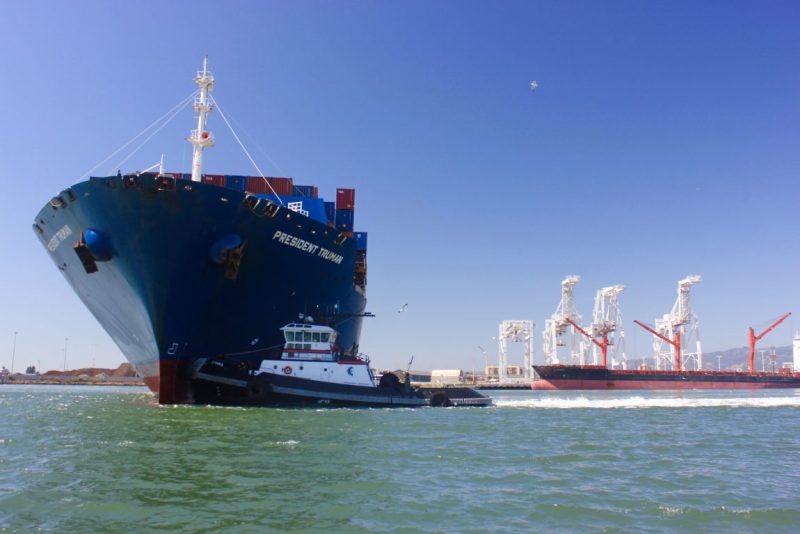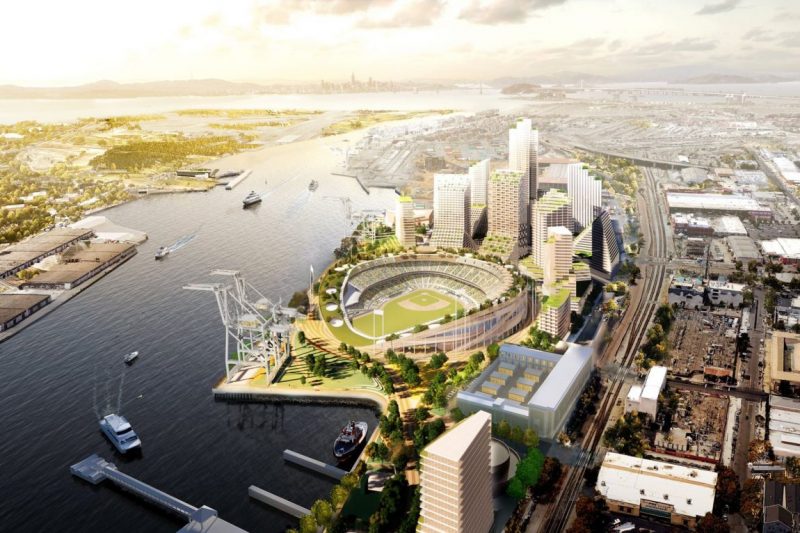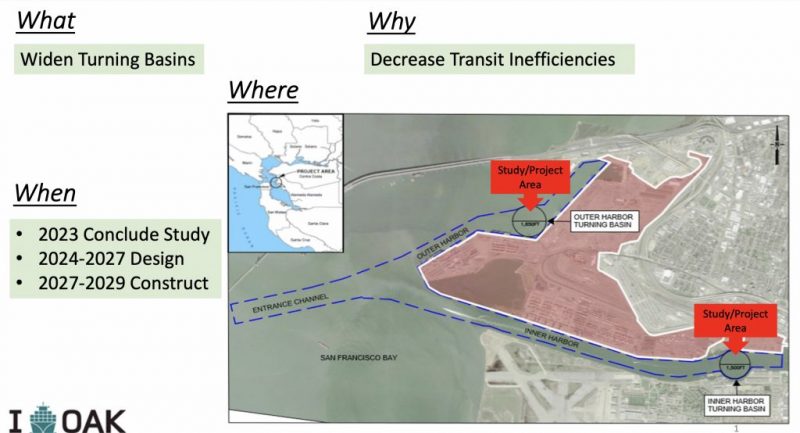
Will Proposed Oakland A’s Ball Park Impede a Future Port of Oakland Estuary Turning Basin?
In one of the starkest conflicts between expanding development and the Bay Area’s working waterfront, concerns have surfaced that an ambitious project along the Oakland Estuary could interfere with ship traffic. Somehow, baseball’s worst and famously lowest-budget team is not only at the helm of a transformative development on the Oakland Estuary, but could could also be in a position to control the growth of the Port of Oakland itself.
Howard Terminal, in the southeast corner of the Port near the edge of Jack London Square, is being considered for an expansion project to widen the current Turning Basin in the Oakland Estuary, where large container ships are spun around to face bow out. According to a representative from the Pacific Merchant Shipping Association (PMSA), the proposed expansion could be in jeopardy “if the Bay Conservation and Development Commission [BCDC] approves the Oakland Athletics application to exclude the Howard Terminal site from its current seaport designation.”
In July 2022, the BCDC voted to allow Howard Terminal to change its designation from “port priority use” to “other purposes,” a key step in clearing the path for the A’s to build a new stadium, and to potentially say no to the Turning Basin expansion. The BCDC will vote on the A’s full application on June 30, according to the American Journal of Transportation.

The spokesperson for the PMSA said that a yes vote for the A’s stadium by BCDC in June “will effectively cede control of the 10 acres designated for the Turning Basin expansion to the Oakland A’s,” which would allow the A’s to veto the Turning Basin expansion, which needs to be enlarged into a portion of the Howard site. The PMSA spokesperson also said that “if the Port and the A’s are acting in good faith, they should put their money where their mouth is and keep the 10 acres in the port in the port priority use, and not remove it with the rest of the land that is slated for condominiums and the ballpark,” AJOT reported.
However, a Port of Oakland official told AJOT that the Turning Basin expansion was certain to move forward. “The Port’s agreement with the Oakland A’s reserves up to 10 acres of the Howard Property for the Turning Basin project,” a Port spokesperson told AJOT.

The Port of Oakland and the US Army Corps of Engineers are now studying the feasibility of the estimated $400 million project to widen Oakland’s two federal turning basins — the Outer Harbor, which lies between the eastern ramp of the Bay Bridge and the north shore of the port, and the Inner Harbor, between Howard Terminal and Alameda.
“The Port expects to complete a draft Environmental Impact Report for public review in early 2023,” the Port of Oakland said in a press release.

So how is it that the worst and lowest-budget team in baseball can wield such power over the future of the Estuary and the Port of Oakland? And how much will taxpayers have to kick in to make it happen?
The 35,000-seat, 55-acre ballpark will be “privately financed,” according to most sources. But the $12 billion project, which will include housing, retail, a hotel and other amenities, will involve some chunk of public money to finance the infrastructure and transportation surrounding the stadium.
“It’s still not clear exactly how much public money is involved,” the San Francisco Chronicle reported.
When the California budget was finalized in 2021, a $279.5 million appropriation to the Port of Oakland was inserted for “improvements that facilitate enhanced freight and passenger access and to promote the efficient and safe movement of goods and people,” Cal Matters reported. The state legislature’s hefty allocation was a response to “numerous pleas from the shipping industry for upgrades to maintain the port’s viability in the face of intense competition for international trade.”
But in 2022, when the port commission approved a list of specific projects that the $279.5 million would finance, the “true purpose became clear. The money would pay for facilities to make it easier for baseball fans to access the new stadium. They apparently would be the ‘passengers’ the appropriation cited,” said Cal Matters.

Who’s zooming whom! I’d make darn sure there are no conflicts of interest! But as we have often seen, officials in charge of regulating industries retire with hefty pensions, and are immediately hired by the very groups they were charged with regulating!
https://www.fieldofschemes.com/category/mlb/oakland-as/